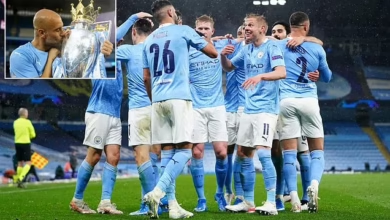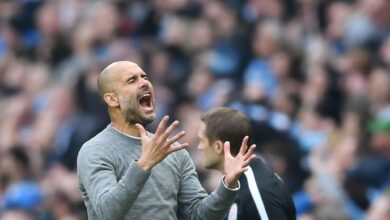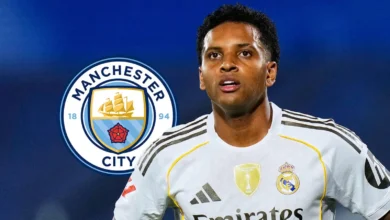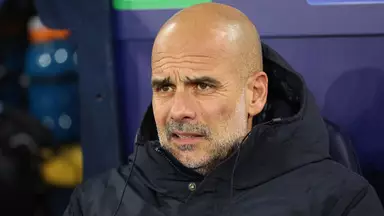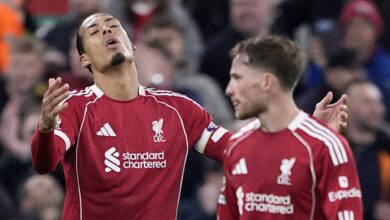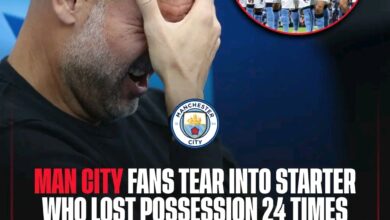Manchester City’s Transfer Revolution: A Strategic Analysis of Summer 2025 Recruitment
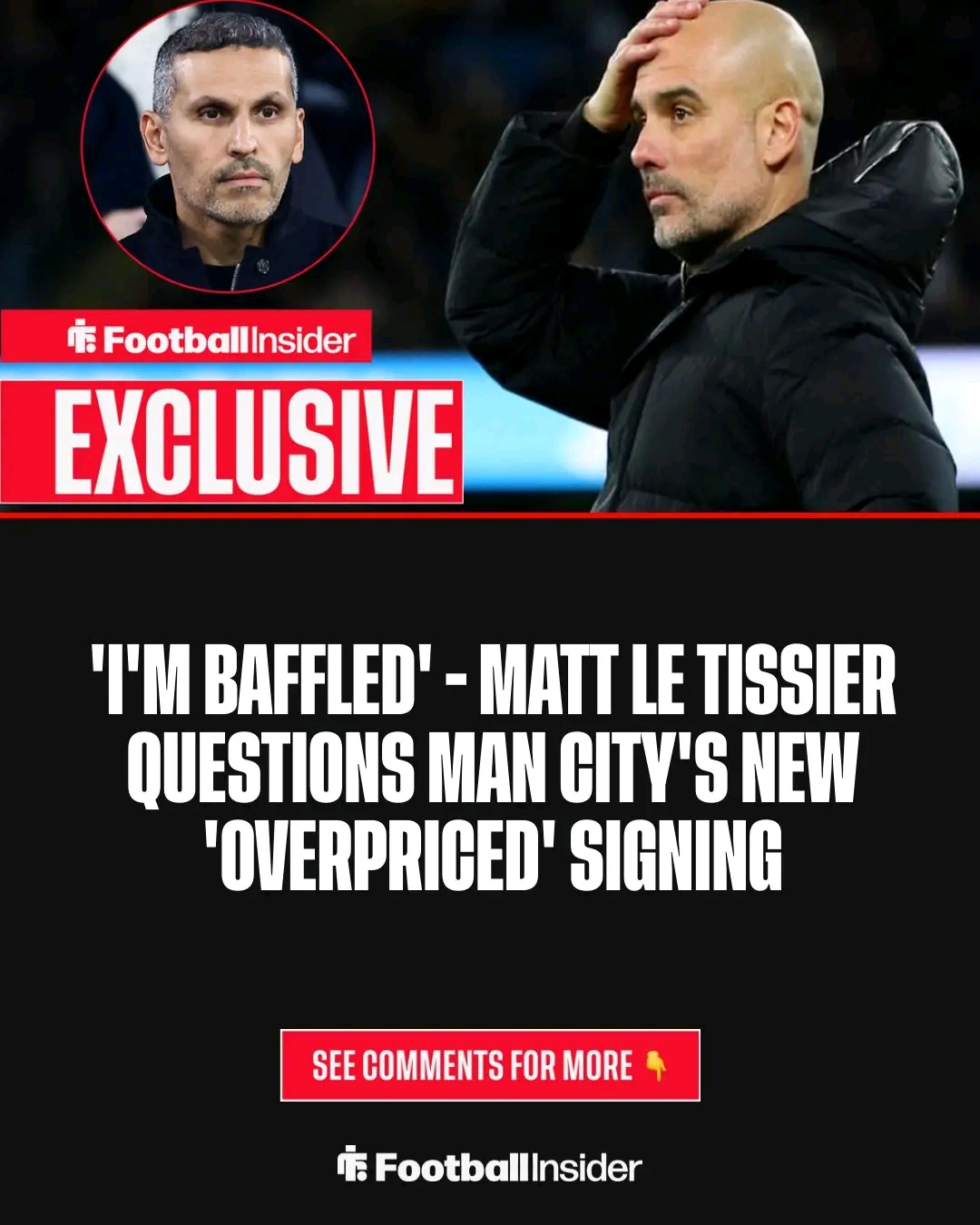
Manchester City’s approach to the summer 2025 transfer window represents one of the most significant strategic pivots in Pep Guardiola’s tenure at the Etihad Stadium. Following what can only be described as a disappointing 2024/25 campaign, the club’s hierarchy made a decisive move to overhaul their squad philosophy, moving away from the previous summer’s conservative approach that saw only minimal investment in new talent.
The stark contrast between the club’s minimal activity in summer 2024 and their aggressive pursuit of multiple targets in 2025 tells a story of lessons learned and strategic recalibration. When a club of Manchester City’s stature and ambition finds itself struggling to maintain the standards that have defined their recent golden era, the response must be swift and comprehensive
To understand Manchester City’s current transfer strategy, one must first examine the factors that necessitated such dramatic change. The 2024/25 season served as a harsh reminder that even the most successful teams cannot rely indefinitely on aging squads or assume that minimal investment will suffice to maintain competitive edge.
The decision to bring back Ilkay Gündogan from Barcelona, while adding only Savinho to the squad, reflected a belief that experience and continuity could compensate for the natural decline that affects all aging squads. However, this approach proved insufficient as City struggled to replicate the intensity, creativity, and tactical flexibility that had made them the dominant force in English and European football.
The lack of energy and verve that characterized much of their 2024/25 campaign highlighted several critical issues: an aging midfield core, insufficient squad depth in key positions, and a concerning over-reliance on established players who, while still technically proficient, had begun to show signs of physical and motivational decline.
Manchester City’s summer 2025 recruitment drive represents a fundamental shift in philosophy, embracing both quantity and quality in equal measure. The acquisitions of Tijjani Reijnders, Rayan Cherki, Rayan Ait-Nouri, Marcus Bettinelli, James Trafford, and Sverre Nypan demonstrate a clear intent to address multiple areas of concern simultaneously while building for both immediate impact and long-term sustainability.
The acquisition of Tijjani Reijnders from AC Milan represents perhaps the most strategically significant signing of the window. The Dutch international midfielder brings a unique combination of technical ability, tactical intelligence, and physical presence that addresses several of City’s midfield concerns from the previous season.
Reijnders’ ability to operate effectively in multiple midfield roles provides Guardiola with the tactical flexibility that proved so crucial during City’s most successful campaigns. His experience in Serie A, where tactical discipline and positional awareness are paramount, suggests he can adapt quickly to Guardiola’s demanding system while offering fresh perspectives and energy to a midfield that had become predictable.
The timing of this signing is particularly astute, as it provides immediate competition for places while offering insurance against the inevitable decline of the current midfield core. Reijnders represents the profile of player City should target: technically excellent, tactically sophisticated, and at an age where he can contribute immediately while still having room for development.
The capture of Rayan Cherki from Lyon addresses City’s need for creative unpredictability in the final third. The French playmaker’s ability to create moments of magic from seemingly impossible situations provides Guardiola with a different type of attacking threat, one that can unlock stubborn defenses through individual brilliance rather than systematic buildup play.
Cherki’s youth and potential make this signing particularly intriguing from a long-term perspective. At just 21, he represents the type of investment that can pay dividends for years to come, while his immediate impact potential addresses the urgent need for creative spark that was notably absent during City’s struggles.
The integration of a player with Cherki’s profile into Guardiola’s system will be fascinating to observe. While his natural instincts may occasionally conflict with the systematic approach that defines City’s play, this creative tension could prove beneficial, forcing both player and system to evolve and adapt.
The acquisition of Rayan Ait-Nouri from Wolves represents a shrewd piece of business that addresses multiple tactical requirements. The Algerian left-back’s combination of defensive solidity and attacking thrust provides Guardiola with options in a position that has become increasingly important in modern football.
Ait-Nouri’s Premier League experience eliminates concerns about adaptation to English football’s unique demands, while his age profile suggests he can contribute immediately while continuing to develop. His ability to provide width in attack while maintaining defensive discipline aligns perfectly with Guardiola’s tactical requirements for full-backs.
This signing also demonstrates City’s willingness to strengthen positions of relative stability, recognizing that depth and competition for places are crucial for maintaining high standards across a long season
Perhaps no signing has generated more debate than the £31 million acquisition of James Trafford from Burnley. The decision to invest such a significant sum in a goalkeeper who may spend considerable time as a backup raises important questions about resource allocation and player development
From a purely financial standpoint, £31 million represents a substantial investment for any position, but particularly for a goalkeeper who may not be guaranteed regular first-team football. This expenditure could be viewed as excessive when considering alternative uses for such funds, particularly in outfield positions where City have historically needed reinforcement.
However, this analysis must be contextualized within Manchester City’s broader financial framework. For a club with City’s resources, the £31 million represents a manageable risk that could yield significant returns if Trafford develops as expected. The modern goalkeeper market has seen consistent inflation, and securing a young, talented English goalkeeper with Premier League experience may prove prescient.
From a sporting perspective, Trafford’s signing makes considerably more sense. The uncertainty surrounding Ederson’s future, combined with the need to plan for long-term succession, justifies investment in the position. Trafford’s age profile, experience, and potential make him an ideal candidate to challenge for the number one spot while serving as Ederson’s long-term replacement.
The English goalkeeper’s familiarity with the Premier League eliminates adaptation concerns, while his technical ability and distribution skills align with Guardiola’s requirements for the position. His development trajectory suggests significant room for improvement, making this signing potentially transformative for both player and club.
Critics of the Trafford signing often focus on the potential impact on his development, questioning whether backup status at City serves his long-term interests better than regular football elsewhere. This perspective, while understandable, perhaps underestimates the developmental benefits of training daily with world-class teammates under elite coaching.
The modern football landscape has shown repeatedly that players can continue developing even without regular first-team football, provided they are in the right environment. City’s track record of player development, combined with Guardiola’s ability to improve goalkeepers, suggests Trafford’s progression may actually accelerate despite potentially limited playing time initially.
Manchester City’s aggressive recruitment strategy reflects a broader understanding of modern football’s demands. The successful teams of the contemporary era are those that can maintain high standards across multiple competitions while dealing with the inevitable injuries, suspensions, and form fluctuations that affect all squads.
Guardiola’s tactical approach has always relied heavily on squad rotation, both to manage player fitness and to maintain tactical flexibility. The addition of multiple high-quality players in various positions provides the depth necessary to implement this approach effectively without compromising competitive standards.
The integration of players like Reijnders, Cherki, and Ait-Nouri into the squad creates healthy competition for places while providing tactical alternatives that can be crucial in different types of matches. This depth allows for strategic rest periods for key players while maintaining the quality necessary to compete at the highest level.
City’s substantial investment must also be viewed within the context of Financial Fair Play regulations and their impact on transfer strategy. The club’s ability to make multiple significant signings suggests careful financial planning and potentially indicates confidence in their ability to generate sufficient revenue to support such expenditure.
The balance between developing young talent and acquiring established players reflects a sophisticated approach to squad building that aims to comply with regulations while maintaining competitive excellence. This strategy requires careful consideration of both immediate needs and long-term sustainability.
The successful integration of multiple new players into Guardiola’s complex tactical system represents one of the most significant challenges facing Manchester City in the coming season. Each new signing must not only adapt to the technical and physical demands of City’s play but also understand their role within the broader tactical framework.
Guardiola’s system has always required players capable of operating in multiple positions and understanding various tactical roles. The new signings suggest a continuation of this approach, with players like Reijnders and Cherki possessing the versatility necessary to contribute in different tactical configurations.
This flexibility becomes particularly important when considering City’s approach to different competitions and opponents. The ability to modify tactical approaches while maintaining core principles requires players who can adapt quickly to changing requirements.
History suggests that Guardiola typically requires time to fully integrate new players into his system, with some taking a full season or more to reach their optimal contribution level. This timeline must be considered when evaluating the immediate impact of the summer signings and their contribution to the upcoming season’s objectives.
The staggered nature of the signings, with some arriving early in the window and others later, allows for phased integration that could prove beneficial for both individual players and team cohesion.
Manchester City’s transfer activity reflects not just immediate needs but also a clear long-term vision for the club’s future. The age profiles of the new signings suggest planning for the next phase of the club’s development, as the current golden generation inevitably ages and requires replacement.
The signings of younger players like Cherki, Trafford, and Nypan demonstrate forward-thinking succession planning that aims to ensure continuity of success beyond the current squad’s peak years. This approach recognizes that successful clubs must constantly regenerate their squads while maintaining competitive standards.
The balance between immediate impact signings and developmental players reflects sophisticated squad planning that considers both short-term objectives and long-term sustainability.
Beyond tactical and technical considerations, the successful integration of new players requires careful attention to cultural fit and dressing room dynamics. City’s established culture of professionalism and winning mentality provides a strong foundation for new arrivals, but careful management of personalities and expectations remains crucial.
Manchester City’s transfer activity cannot be viewed in isolation but must be considered within the broader context of their competitors’ activities. The need to maintain competitive advantage while responding to rivals’ strengthening efforts influences both the timing and nature of transfer decisions.
The competitive intensity of the Premier League requires constant squad improvement to maintain position at the summit. City’s comprehensive refresh acknowledges that standing still in the transfer market effectively means moving backward relative to ambitious competitors.
The strategic timing of signings, completing much of their business early in the window, demonstrates awareness of market dynamics and the importance of providing new players with adequate preseason preparation
City’s continued pursuit of Champions League success influences their transfer strategy, requiring squad depth and tactical flexibility to compete effectively across multiple competitions. The new signings provide options for different tactical approaches that may be necessary against varied European opponents.
While Manchester City’s transfer strategy appears comprehensive and well-planned, several potential challenges and risks must be acknowledged and addressed for the approach to succeed
The simultaneous integration of multiple new players presents logistical and tactical challenges that require careful management. Ensuring that individual development doesn’t compromise team cohesion requires sophisticated coaching and clear communication of expectations.
Despite City’s financial strength, the substantial investment in new players must generate appropriate returns through improved performance and commercial opportunities. The pressure to justify significant expenditure through tangible success creates additional performance pressure.
Ensuring that all new signings receive adequate development opportunities while maintaining competitive standards requires careful rotation and game time management. The challenge of keeping multiple high-quality players satisfied with their roles is particularly acute in key positions
Manchester City’s comprehensive summer transfer strategy represents a calculated gamble on future success that acknowledges both the lessons of recent disappointment and the opportunities presented by strategic investment. The combination of immediate impact signings and developmental players suggests a sophisticated approach to squad building that balances present needs with future requirements.
The success or failure of this strategy will ultimately be measured by on-field performance, but the early indicators suggest thoughtful planning and strategic clarity. The challenge now lies in the execution phase, where tactical integration, player development, and competitive performance must align to justify the substantial investment.
The debates surrounding individual signings, particularly James Trafford, reflect broader questions about resource allocation and development pathways in modern football. However, these discussions should be viewed within the context of City’s overall strategic vision and their demonstrated ability to develop players within their unique tactical framework.
As the new season unfolds, Manchester City’s transfer strategy will face its ultimate test: the ability to translate investment into improved performance and sustained success. The foundation appears solid, but football’s inherent unpredictability ensures that only time will reveal whether this comprehensive refresh achieves its ambitious objectives.
The stakes are high, but for a club of Manchester City’s ambition and resources, such calculated risks are essential for maintaining position at the pinnacle of world football. The coming season will provide fascinating insights into whether this strategic pivot proves as transformative as the club’s leadership clearly hopes it will be.







